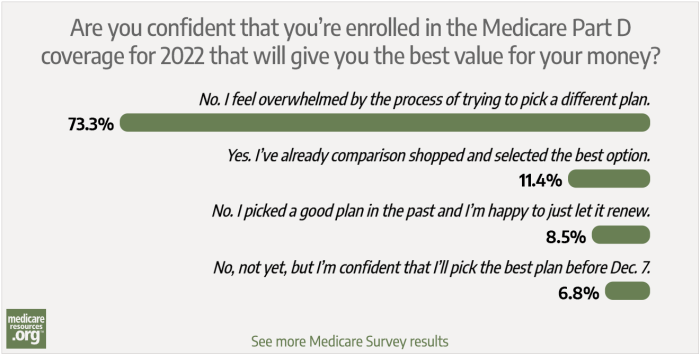Q: Do Medicare supplement plans include prescription drug coverage?
A: Modern Medigap plans do not include prescription drug benefits. Instead, Medicare offers prescription drug coverage under Part D. Medicare enrollees can get prescription coverage either by switching to a Medicare Advantage plan (most of them include prescription coverage) or by purchasing a stand-alone Medicare Part D plan (PDP) to go along with Original Medicare.
However, if you purchased a Medigap policy prior to January 1, 2006 and still have the same plan, it may include prescription drug coverage. Plans H, I, and J included limited prescription coverage for beneficiaries who purchased them prior to 2006, although those plans are no longer sold. If you’re in this situation and you want to join a PDP, you must drop the prescription drug coverage from your Medigap since you can’t have two separate prescription drug coverage policies at the same time.
Can I drop my Medigap plan's prescription drug coverage and enroll in Part D?
Although there was a guaranteed issue period for people with pre-2006 Medigap plans to switch to a new Medigap plan and a PDP, if you’re doing that now you’ll probably have to go through medical underwriting for the Medigap plan (unless you qualify for a guaranteed issue right).
The good news if you’re in this situation is that you should be allowed to drop just your Medigap prescription coverage and keep the other coverage provided by your current Medigap plan. But you’ll have to pay a late enrollment penalty for Part D, if the Medigap plan has been providing your only prescription drug coverage.
Will I owe a Part D penalty if I drop my Medigap prescription drug coverage?
Medigap prescription drug coverage is not “creditable coverage” that allows you to delay Part D enrollment. You’ll owe a penalty if you didn’t enroll in Part D when you were first eligible, and either didn’t have prescription coverage while your enrollment was delayed, or your coverage wasn’t considered creditable. The penalty is 12% for each year that enrollment was delayed and is calculated in one-month increments. It is based on the nationwide base Part D premium, so your penalty won’t be higher if you enroll in a more expensive plan.
This booklet has more details about the switch from pre-2006 Medigap plans on page 178.
Tags: Medicare Advantage, Medicare Part D, Medicare supplement, Medigap, Original Medicare, prescription drug coverage







